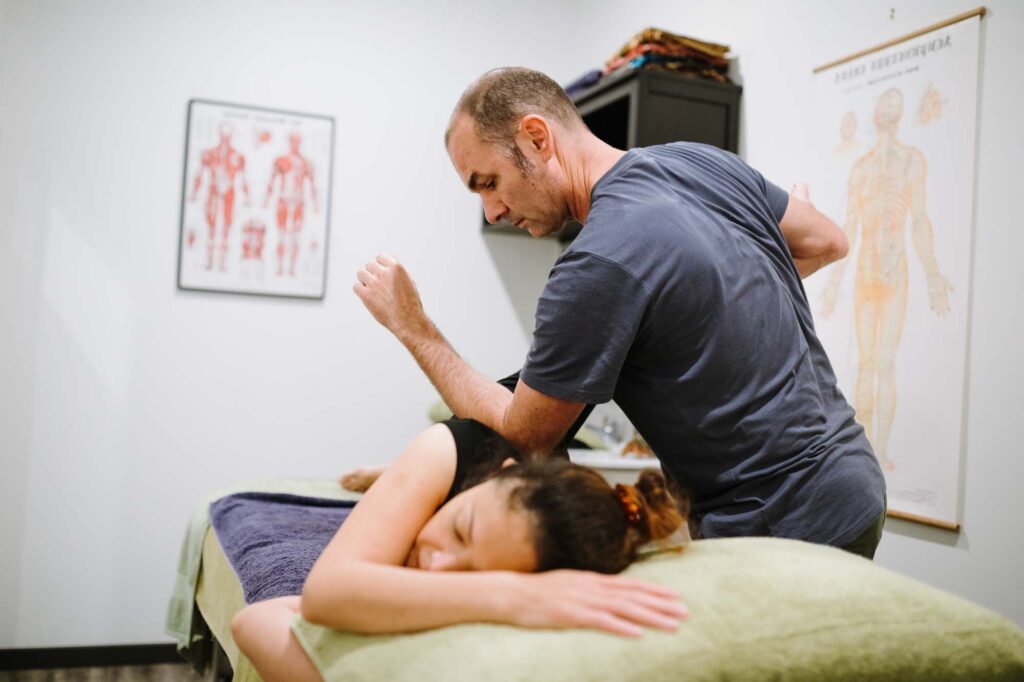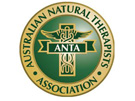Remedial massage
Remedial massage is the systematic assessment and treatment of the muscles, tendons, ligaments and connective tissues of the body to assist in rehabilitation, pain and injury management.
Remedial massage aims to reduce or eliminate pain, and restore normal function of muscles and joints. It can help increase joint mobility and flexibility, stimulate the lymphatic system and promote blood flow, particularly to injured areas

Mobile Remedial Massage Ballina
The mobile remedial massage session is meticulously crafted to dissolve your persistent work aches and athletic strains, all in the comfort of your own space—rebuilding your natural movement where you need it most.
Practitioners employ palpatory precision and biomechanical evaluation to map patterns of hypertonicity, ischemia, and adhesions, taking into account referred pain and neurogenic inflammation.
Remedial Massage integrates principles from kinesiology, orthopedics, and neurodynamics, emphasizing evidence-based protocols for tissue remodeling and homeostatic balance. Its scope extends to rehabilitation of sports injuries, postural imbalances, and chronic pain syndromes, prioritizing symptom relief, movement efficiency, and neuromuscular adaptation.


Pre-Appointment Checklist for Remedial Massage
Please print this NEW PATIENT INTAKE FORM and fill it out before our appointment (Not required for existing clients).
Complete the intake form, hydrate well, eat a light meal 2 hours prior, shower, wear loose clothing, and jot down pain areas.
-
Hydrate—Make sure you’re hydrated before your treatment begins to keep muscles pliable and assist toxin removal.
-
Eat lightly—a small, balanced snack 1–2 hours beforehand prevents low-blood-sugar dizziness without leaving you bloated.
-
Shower & hygiene—a quick warm shower relaxes muscles and ensures comfort for both you and your therapist.
-
Dress for access – remove necklaces, bracelets, watches and long earings before your treatment begins. depending on the area that will be worked, clothing here will need to be removed.
-
List symptoms—write down pain locations, recent injuries, medications, and what you want to achieve so the session can be tailored precisely.
Techniques used in remedial massage
Areas that Benefit from Remedial Massage
Neck and shoulders: Common focus areas for alleviating tension, headaches, and restricted movement resulting from stress, poor posture, or repetitive motion.
Legs (including hamstrings and calves): Treated to ease muscle soreness, aid recovery from sports injuries, and improve circulation after prolonged standing or activity.
Arms and forearms: Addressed to reduce discomfort from repetitive tasks or conditions like tendonitis, enhancing grip strength and flexibility.
What are the main benefits of remedial massage?
Remedial massage enhances local circulation, decreases inflammatory markers, and promotes lymphatic drainage, resulting in accelerated recovery from soft tissue injury and a measurable reduction in delayed onset muscle soreness.
Single and repeated sessions have demonstrated reductions in anxiety and improvement in mood and subjective well-being through modulation of neurohormonal pathways.
Evidence supports increased joint flexibility, improved range of motion, improved postural alignment
These outcomes are fostered by the neuromodulatory effects of sustained manual pressure, which recalibrate pain signaling and restore biomechanical alignment, with documented effects on both physiological and psychological health.
Can remedial massage speed up recovery after sports injuries?
Clinical trials show athletes receiving regular remedial massage experience faster resolution of delayed-onset muscle soreness (DOMS) and increased joint flexibility, leading to quicker return to their sport.
A randomized controlled trial assigned 150 athletes aged 18–45 years to bi-weekly 40-minute deep-tissue massage for eight weeks, measuring performance, recovery, and flexibility with objective and subjective tests.
nih.gov
Are there any risks or situations where remedial massage should be avoided?
Yes—remedial massage must be postponed or completely avoided when you have active blood clots, open wounds, fever, severe osteoporosis, bruising, swelling unstable fractures, cancer in the treatment area, or any acute infection or inflammation
Absolute (Never) Contra-indications
-
Deep-vein thrombosis (DVT) or any known clotting disorder—massage can dislodge clots and trigger pulmonary embolism.
-
Acute injuries within 48–72 hours (fractures, sprains, burns, open wounds) where inflammation is still high.
-
Active infection, fever, or contagious skin conditions (e.g., cellulitis, impetigo, herpes simplex) to prevent spread.
-
Cancer in the region to be massaged unless oncology-trained therapist clearance is obtained.
-
Specific heart conditions – unless cleared by your specialist.
Relative (Proceed With Caution)
-
Severe osteoporosis, uncontrolled hypertension, recent surgery sites, or pregnancy—technique and pressure must be modified.
-
Blood-thinning medications or bleeding disorders—light, superficial work only, with physician approval.
Show You Care—Give a Moment of Ease
Surprise your loved one with a gift voucher for remedial massage, massage, or acupuncture—let them choose the treatment they need for pure comfort and renewed energy
Purchase a gift cardWhat to know about remedial massage
Is remedial massage covered by private health insurance in Australia?
Yes, Remedial Massage (Diploma level qualification) and Acupuncture (Bachelors degree) are covered by private health in Australia.
However, only Australian Unity, AHM and CBHS cover mobile massage therapy.
Private health funds will only cover mobile Acupuncture if a herbal medicine prescription is included. Defined health does not offer herbal medicine consultations.
How do I know if remedial massage is appropriate for my specific injury or condition?
Assess Your Symptoms
-
Pain or restriction originates in muscle or connective tissue (e.g., calf strain, tennis elbow, tension headache).
-
Symptoms have lasted more than 72 hours after the initial injury; during the first 72 hours, follow RICE (rest, ice, compression, elevation) instead .
-
You have received medical clearance if the injury is acute, severe, or involves possible fractures, infections, or systemic illness .
Check for Contra-indications
-
Fever, acute inflammation, open wounds, or skin infections in the area .
-
Deep-vein thrombosis, severe osteoporosis, or uncontrolled high blood pressure .
-
Recent surgery or cortisone injections until cleared by your physician.
Is remedial massage painful or uncomfortable?
Remedial massage can cause short-lived discomfort or a “good pain” sensation, but it should never cross into sharp, intolerable pain. Your therapist will adjust pressure and technique to stay within your tolerance and achieve therapeutic results.
How Often Should I Get Remedial Massage for the Best Results?
-
Acute pain or injury recovery: Start with once or twice a week for up to 6 weeks to reduce pain and improve baseline function.
-
Chronic tension or high activity/stress:Every 1–2 weeks (depending on the individual and circumstances).
-
General maintenance: Once every 4 weeks
What Should I Do Before My Remedial Massage Appointment?
Fill in your patient consultation form so we can go through your medical history. Be clean and showered.
What Should I Do After My Remedial Massage Appointment?
Within 30 min after your treatment, drink enough water to hydrate, and assist the body to cleanse. Avoid intense exercise; light exercise such as a walk and stretch is good. A warm shower is also good.
Remedial massage vs deep tissue: what is the difference?
Remedial massage focuses on assessing and treating specific injuries or dysfunctions, while deep tissue massage targets deeper muscle layers to release chronic tension. Remedial massage uses a variety of techniques tailored to your condition and may include assessments, stretching, and targeted treatment plans. In contrast, deep tissue massage concentrates on sustained pressure to tight areas, aiming mainly to relieve muscle knots and ongoing stiffness rather than addressing diagnosed injuries or restoring function.
Both are therapeutic, but deep tissue focuses on deeper layers of muscle and fascia. Sometimes after deep tissue massage the patient may be bruised, fatigued and sore for a couple days. Remedial massage treats various other dysfunctions not necessarily related to the deeper muscles/fascia.
Remedial massage vs myotherapy: what is the difference?
Remedial massage treats muscle pain and dysfunction using hands-on techniques, while myotherapy is a clinical approach that assesses and treats both the symptoms and underlying causes of musculoskeletal pain using a broader range of methods.
Remedial massage focuses on relieving muscle tension, improving mobility, and aiding recovery through massage, but generally uses only manual techniques. Myotherapy, on the other hand, includes advanced assessments and may incorporate dry needling, cupping, joint mobilization, corrective exercise, and trigger point therapy, enabling more comprehensive treatment and prevention of injuries or chronic issues.+
Myotherapy is a more advanced form of clinical therapy that focuses on assessment, diagnosis of complex, chronic musculoskeletal dysfunction. Within their scope, myotherapist’s are also permitted to diagnose. Remedial massage therapists focus on manipulation of soft tissues; skin, muscles, fascia tendons and ligaments to promote healing.
Remedial massage vs normal massage: what is the difference?
Remedial massage is a targeted treatment for specific injuries or dysfunctions, while normal (relaxation) massage aims to promote general relaxation and stress relief. Remedial massage involves assessment and tailored techniques to address particular problems, restore function, and reduce pain, whereas normal massage uses gentle, flowing strokes to improve circulation and relax the whole body without focusing on clinical outcomes.
“Normal Massage” is more correctly termed Swedish Massage. Swedish massage doesn’t treat and address specific conditions. It’s strokes are longer, not too firm, stimulates lymph and blood flow and promotes relaxation through it’s more superficial nature. Remedial massage involves assessment, tailored techniques designed to treat specific issues/conditions.
What should I expect to feel during and after a remedial massage session?
During a remedial massage session, you may feel targeted pressure, stretching, and some discomfort on problem areas, while after the session most people experience reduced pain, greater mobility, and a sense of relaxation.
It’s normal to feel mild soreness, tenderness in the treated areas for up to 24–48 hours, similar to what you might feel after a workout. This usually subsides, leaving you with improved muscle function and less tension. Some clients also report increased energy or deep relaxation, depending on their treatment focus and body response. Occasionally one may experience a light headache as many toxins can be released into the system. If one experiences this it’s advised to not take medication for the headache, drink plenty of water instead and let the headache subside naturally.
